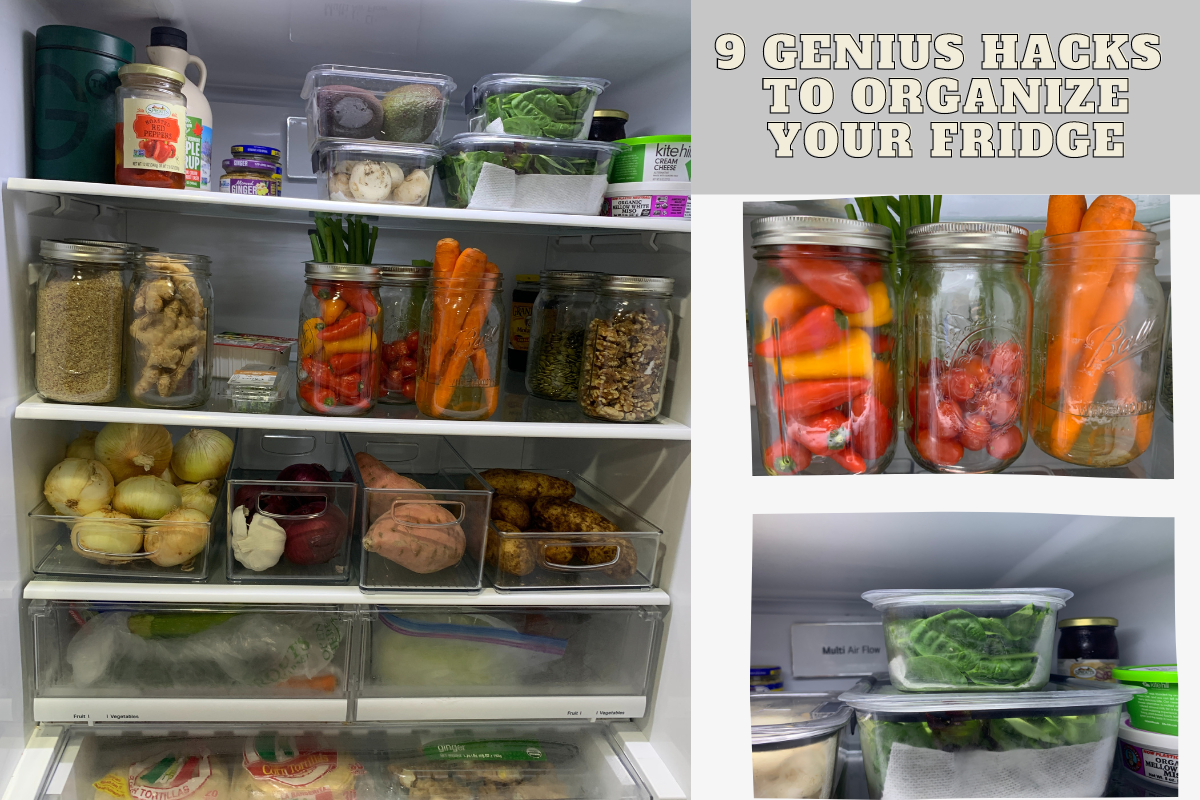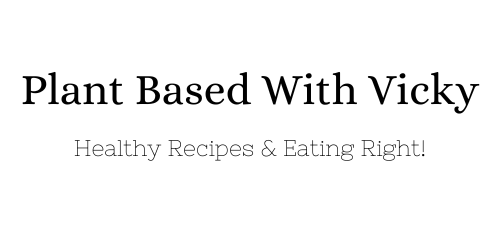9 Genius Hacks To Organize Your Fridge

 Disclosure: Articles may contain affiliate links. As an Amazon Associate, we earn from qualifying purchases (at no additional cost to you). See our full disclosure here.
Disclosure: Articles may contain affiliate links. As an Amazon Associate, we earn from qualifying purchases (at no additional cost to you). See our full disclosure here.
A well-organized fridge can make it so much easier for you to maintain a plant-based diet and ensure your fruits and vegetables, stay fresh and easily accessible.
Below are some great storage and organizational ideas to help you transform your refrigerator into a well organized and decluttered space.
Preparing Your Refrigerator
Before you dive into organizing your refrigerator, take some time to prepare. This involves cleaning, decluttering, and ensuring you have the essential tools and containers on hand.
Clean and Declutter
Start by removing all items from your refrigerator. Clean the shelves, drawers, and any other compartments thoroughly. This will give you a fresh canvas for reorganizing. As you remove items, check for expired or spoiled foods and discard them.
Invest in Quality Storage Containers

Invest in a variety of storage containers, such as glass jars, BPA-free plastic containers, and reusable silicone bags. Having a range of sizes and shapes will make it easier to store different types of foods and keep them fresh longer.
Rubbermaid has a great set of organizers that are dishwasher safe and hold up really well. I have used these for a few years and the lids seal well and keep the food fresh for a long time. I put a link to them down below.
Use Small Door Organizers to double the space
There are some great organizational products that attach to the inside of the refrigerator door to hold small condiment packs and items. These really help to keep the small items front and center and not lost inside the refrigerator.
Labeling and Dating
Consider labeling containers with the date of purchase or preparation. This practice helps you keep track of freshness and prevents food waste.
Organizing Your Refrigerator
Now that your refrigerator is clean and well-prepared, let’s dive into the best ways to organize it for your plant-based journey.
Use Clear Containers
Opt for clear containers whenever possible. Transparency allows you to quickly see what’s inside without having to open every container. This reduces the chance of forgetting about food and letting it go to waste.
Use Mason Jars

Mason jars make great storage containers for the fridge. You can add a small amount of water to the bottom and help keep things like celery, carrots, green onions fresh for so much longer. The tall and narrow jars also take up less room on the shelf and make it so easy to see what you have quickly.
Middle Shelves: Fresh Produce
Use the middle shelves for your fresh produce. Store items like leafy greens, herbs, broccoli, cauliflower, carrots, and bell peppers here. Be sure to use crisper drawers for items that need higher humidity, such as greens, and items that require lower humidity, such as fruits.
Bottom Shelf: Cooked Grains and Proteins
The bottom shelf is ideal for cooked grains like quinoa, rice, and pasta, as well as plant-based proteins like tofu, tempeh, and seitan. Store them in airtight containers to prevent moisture loss.
Door Shelves: Condiments and Sauces
The refrigerator door shelves are suitable for condiments, sauces, and dressings. Ensure you have a wide range of plant-based condiments like mustard, ketchup, soy sauce, and vegan mayonnaise to add flavor to your meals.
Designate a Snack Drawer
Designate one of your refrigerator drawers as the “snack drawer.” Fill it with cut-up fruits, veggies, and other healthy snacks for quick, convenient access.
Keep Plant-Based Milk on Hand

Plant-based milk is a staple in many plant-based diets. Store various types of plant-based milk, such as almond, soy, oat, or coconut milk, in the door compartments for easy access.
Fresh Herbs
Keep herbs in mason jars or in herb containers. Add in some water to help them stay fresh.
Prep Vegetables
Wash, peel, and chop your vegetables in advance. Store them in containers or reusable bags, so they’re ready for salads, stir-fries, or snacking.
Label Leftovers
When you store leftovers, label them with the date and contents. This helps you identify older items quickly and prevents food from going to waste.
Rotate Items
To ensure that older items are used first, practice the “first in, first out” (FIFO) method. Place newly purchased or prepared items at the back of the shelves and move older items to the front.
Organizing your refrigerator for a plant-based diet is a vital step towards a successful transition. With a clean, well-organized fridge, you’ll have easier access to fresh produce and will make meal prep quick and easy.
Here are links to some of the items I use for my organization.
Disclosure: Plantbasedwithvicky is a participant in the Amazon Services LLC Associates Program, an affiliate advertising program designed to provide a way for websites to earn advertising revenues by advertising and linkton to Amazon. This means that, at zero cost to you, I will earn an affiliate commission if you click through the link and finalize a purchase.
